Athens is a city full of history, as the capital of Greece, known as the cradle of Western civilization. And on the other, you have what must be the world’s most famous ancient ruins, labelled here in a play on words as “Athens” — a reflection of the iconic Acropolis and the tourist highlights that come with its status, not limited to the Parthenon, the Temple of Olympian Zeus and the Ancient Agora.

In addition to its ancient ruins, the city offers a lively air with charming districts such as Plaka, Monastiraki and Psiri, where visitors can find narrow streets filled with traditional tavernas, bustling cafes and artisan shops. Museums — like the well-known Acropolis Museum and the National Archaeological Museum — store troves from Greece’s affluent past, providing an experience of cataclysmic tradition.
Today Athens is a vibrant metropolis that combines its ancient history with a modern urban lifestyle. A center for the arts, music and gastronomy, the city runs the gamut from Michelin-starred dining to casual souvlaki joints serving Greek specialties. Syntagma Square — the heartbeat of Athens, home to the sprawling Hellenic Parliament and the iconic changing of the guard ceremony — is brimming with life.
When the sun goes down, the city awakens to a dynamic nightlife scene with numerous rooftop bars presenting stunning sceneries of the lit-up Acropolis. With its warm Mediterranean climate, rich cultural heritage, and dynamic urban energy, one cannot deny that Athens is one of the most exciting destinations in the globe.
The Acropolis of Athens
The Acropolis of Athens is one of the great historical and architectural sites globally. Occupying a rocky outcrop high above the city, the UNESCO World Heritage Site was the central symbol of the Golden Age of Athens and of ancient Greek civilization. The Acropolis contains at least four of the most iconic structures on Earth—Parthenon, the Erechtheion, the Temple of Athena Nike and the Propylaea.
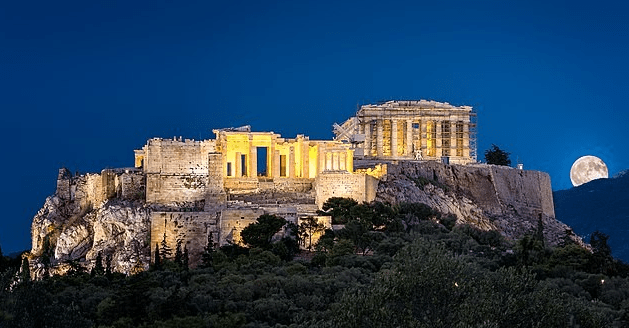
Most iconic of the Acropolis monuments is the Parthenon, dedicated to Athena, the city’s patron goddess. Dating back to the 5th century BC, it showcases classical Greek architecture with its Doric columns and intricate sculptures. The Acropolis also includes the Erechtheion, known for the Caryatid Porch, and the Temple of Athena Nike, the goddess of victory.
Visitors enter through the grand entrance, the Propylaea, and can explore the well-preserved ruins, which tell the story of ancient Greek art, philosophy and democracy. The Acropolis provides stunning 360-degree views of the city of Athens, making it popular among photographers and sightseers alike.
A trip to the Acropolis is a great complement to a visit to the Acropolis Museum, where the bulk of the original artifacts from the site now reside. The museum offers further insights into the history and significance of this ancient citadel .”
Address: Athens 105 58, Greece
Website: https://www.theacropolismuseu
The Parthenon
The Parthenon is one of the best-known architectural wonders in the world. Located at the very top of the Acropolis, this temple was constructed in the 5th century BC to pay tribute to Athena, the patron goddess of Athens. The Parthenon, designed by the architects Ictinus and Callicrates and decorated with sculptures by the noted Phidias, is the most perfect Greek classical temple.
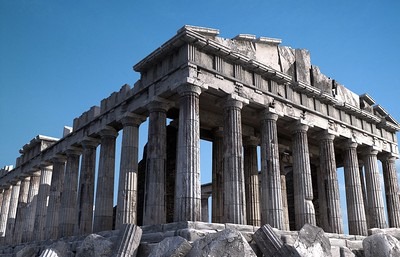
The temple’s Doric columns, precise symmetry and beautiful friezes portraying scenes from Greek mythology are the epitome of artistic achievement in ancient Greece. The Parthenon was damaged over the centuries during wars and natural disasters, however, it still holds its grandeur. One of its most renowned sculptural adornments was the Parthenon Marbles, several of which are now in the British Museum, fueling long-running disputes about their return.
Visitors can tour the majestic structure, the ancient ruins surrounding it and enjoy breathtaking views of Athens. At sunset, the golden light makes the temple even bigger and a breathtaking sight to behold. The nearby Acropolis Museum also adds context to the Parthenon’s past, with artifacts and reconstructions of what the temple originally looked like.
Today this historic monument is undergoing restoration so that it can continue to stand for democracy, philosophy, and artistic achievement. No trip to Athens is complete without seeing the majestic Parthenon.
Address: Acropolis of Athens, Athens 105 58, Greece
Website: https://www.parthenon.gr
The Temple of Olympian Zeus
The Olympeion or the Temple of Olympian Zeus is one amongst the biggest and best temples of old Greece. Construction started during the 6th century BC when Peisistratos ruled the land, but the temple did not finish until the 2nd century AD by the Roman Emperor Hadrian, more than 600 years later. The protracted construction period is a testament to the changes in political regimes and economic challenges which Athens has encountered over thousands of years.
World 10 Top Tourist Attractions right now10 top Ski Resorts In New Mexico 2025

At its height the temple had 104 massive Corinthian columns, each measuring 17 m, making it one of the most ambitious temple-building projects of antiquity. Today, 15 columns still stand and one is on the ground after falling in a storm in the 19th century. Although partly in ruins, the Temple of Olympian Zeus is still an impressive example of both Greek and Roman scale and grandeur.
It was dedicated to Zeus, the king of the Olympian gods, and once contained a giant gold-and-ivory statue of the deity. Nearby is Hadrian’s Arch, an ancient gateway that once signaled the divide between the old city of Athens and the Roman quarter that Emperor Hadrian constructed.
Visitors can stroll among the towering columns and visualize the size of this ancient building. Its central location in Athens makes the temple easy to get to and its proximity to further historical landmarks like the Acropolis and Panathenaic Stadium an essential stop for those who love history proven by the very existence of the remarkable ancient structure.
Address: Vasilissis Olgas 1, Athens 105 57, Greece
Website: https://www.culture.gr
The Ancient Agora of Athens
The Ancient Agora of Athens was the center of public life in ancient Greece. The forum, in particular, was a crowded marketplace and civic center to which locals came to discuss politics, trade goods and just about any philosophical debate that struck them. Some of the brightest minds of ancient Athens, including Socrates and Plato, have walked through these grounds.

Its most famous structure is the Temple of Hephaestus, dedicated to the god of craftsmanship and metalworking, which is known as one of the best-preserved buildings in the Agora. Constructed in the 5th century BC, this Doric temple is among the best preserved of building from the ancient Greek world and remains intact with much of its original structure and decorative friezes.
Another highlight of the Agora is the Stoa of Attalos, a beautifully reconstructed building which currently contains the Museum of the Ancient Agora. It houses various finds from the region such as pottery, coins and sculptures which offer a glimpse into everyday life in ancient Athens.
The Agora Once inside the Agora, visitors can wander through the vestiges of the ancient marketplaces, administrative buildings and altars, learning more about Athens’ democratic roots. The site offers beautiful views of the Acropolis, making it the right place for some more photography and just walking around.
If you love history, Ancient Agora is a must-see — you can find out about the rich culture and the stimulating atmosphere of ancient Greece. Optional guided tours deepen the experience—local guides regale visitors with fascinating tales about how the Agora inspired the development of Western civilization.
Address: Adrianou 24, Athens 105 55, Greece
Website: https://www.agathe.gr
Acropolis Museum
The Acropolis Museum is one of the most important museums in Greece, devoted to preserving and displaying artifacts from the Acropolis and its surrounding area. A technologically advanced museum that was opened in 2009, the museum is only minutes away from the Acropolis and takes visitors into the history and culture of ancient Athens.
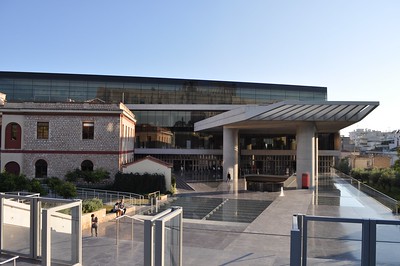
The museum contains a stunning collection of statues, friezes and artifacts from the Archaic period through the Roman period. Among the most famous are the Caryatids, the original statues of nude women who once held up the Erechtheion temple. Visitors to the Parthenon Gallery on the top floor can see the original Parthenon frieze, which allows them to study the detailed carvings of the temple up close.
This distinctive quirk offers an intriguing look into the history piled on top of one another below Athens. The museum has a terrace cafe with magnificent views of the Acropolis, a great place to rest after the exhibits. It is also a must see if you are an ancient Greek history art buff. It adds depth to the monuments of the Acropolis, a way for visitors to better appreciate their historical significance.
Address: Dionysiou Areopagitou 15, Athens 117 42, Greece
Website: https://www.theacropolismuseum.gr
National Archaeological Museum
Greece’s largest and most important museum, the National Archaeological Museum of Athens contains one of the most complete collections of Greek antiquities in the world. Founded in the 19th century, the museum exhibits artifacts spanning from prehistory to the late Roman period, offering a thorough introduction to Greek civilization.
The museum’s collection is chief inside many faculty, chronological stations and artistic styles. Some of its most famous exhibits include the Mask of Agamemnon, a beautiful gold burial mask from Mycenaean Greece, and the Antikythera Mechanism, an ancient device often billed as the world’s first analog computer.
Other standouts include the Poseidon of Artemision, a life-size bronze statue of the god of the sea and frescoes from Akrotiri that provide insight into the Minoan civilization. Its vast collection of Greek pottery, jewelry, and sculptures each tell the tales of a world from antiquity, and give insight into Greek life and the artistry that permeated it.
“Visitors to the museum can wander through its vast halls and trace the development of Greek art, from the geometric patterns of the earliest periods through to the ornate carvings of the Hellenistic periods. To complement the permanent collections, the museum also features a range of temporary exhibitions, educational programs, and guided tours that further enrich the visitor experience.
For history buffs and archaeology fans, the National Archaeological Museum is an indispensable stop in Athens, providing an unmatched tour of Greece’s rich and fascinating past.
Address: 44 Patission Street, Athens 106 82, Greece
Website: https://www.namuseum.gr
Syntagma Square
Syntagma Square forms the heart of Athens, being a historical monument and modern meeting point. Syntagma Square, located in front of the Hellenic Parliament, is the political and social center of the city and where many cultural celebrations, protests, and events take place.

Among the main attractions of Syntagma Square is the Tomb of the Unknown Soldier, a memorial to the Greek soldiers who died in battle. Visitors can watch the ceremonial changing of the guard, which takes place by the Evzones — an elite military unit distinguished by their white skirts and those strange shoes — every hour.
The other buildings are neoclassical and the area includes luxury hotels and shopping streets, crowding tourists and locals alike into a bustling and rich neighborhood. A short walk away from the square, up Ermou Street, one of Athens’s main shopping thoroughfares, the high street is lined with chains, boutiques and cafes.
Syntagma Square is also a convenient point for travel, with metro stations and bus stops that will take you around other parts of Athens. From here it’s a quick walk to major sites like the Acropolis, Plaka and the National Garden.
Whether you want to learn about history, shop, or just enjoy the atmosphere of a bustling city, Syntagma Square is a top site to visit in Athens. It’s the ideal base for exploring the city’s rich culture and lively urban life.
Address: Syntagma Square, Athens 105 57, Greece
Website: https://www.athens.gr
Mount Lycabettu
Mount Lycabettus: At 277 meters above sea level (908 feet) it is the highest point in Athens. It provides stunning panoramic views of the city, the Acropolis, the Aegean sea and mountains in the distance.

In Greek mythology, Mount Lycabettus was formed when Athena the goddess dropped a colossal rock she’d been carrying en route to the Acropolis. Today the hill is a popular spot for visitors hoping for that perfect bird’s-eye view of Athens.
The climb to the top of Mount Lycabettus can be an adventure in itself. Visitors can walk up the winding trails through pine-tree-studded slopes, which takes about half an hour, or ride the Lycabettus Funicular, a cable railway that runs from Kolonaki to the summit. At the top lies the picturesque, whitewashed Chapel of St. George, a quaint little church providing a tranquil atmosphere. An open-air amphitheater that hosts concerts and events draws both locals and tourists.
A hilltop restaurant that provides a great vantage point allows those wishing to eat with a view to relax and soak in the spectacles everywhere around them. Visits at sunset and night are especially popular, when the city lights give a magical atmosphere.
Mount Lycabettus is a must-see in Athens, regardless whether you are a nature lover, a photography lover, or simply want to escape the stress of the city.
Address: Lycabettus Hill, Athens 114 71, Greece
Website: https://www.lycabettus.gr
The Panathenaic Stadium
The Kallimarmaro, or Panathenaic Stadium, is one of the most famous historical sights of Athens. It is the only stadium in the world made completely of marble, but it has also been centrally involved in the history of sport. The stadium was originally built in the 4th century BC to allow for the Panathenaic Games, which honored the goddess Athena. But the structure that exists today was reconstructed during the late 1800s, for the first modern Olympic Games held in 1896.

The Panathenaic Stadium seated about 50,000 people and had a long U-shape typical of ancient Greek stadiums. Another thing you will feel when entering the stadium is the size and importance of the historical heritage site. The stadium has, over the years, hosted several major events, including the Athens 2004 Olympic Games, and remains the finishing point of the annual Athens Marathon.
Panathenaic Stadium Guided Tours. It includes a trip to the stadium’s mini-museum with a nice display of past Olympic torches and medals from previous Games. They also have the chance to walk on the historic track where athletes once competed in ancient times.
Whether you are a fan of sports or ancient civilizations, the Panathenaic Stadium is a perfect attraction that penetrates into the Olympian spirit and the magnificence of the ancient time. Whether you’re doing a lap on the track or just stopping to enjoy the impressive sight, this site is a must-see in Athens.
Address: Vasileos Konstantinou, Athens 116 35, Greece
Website: https://www.panathenaicstadium.gr
The Roman Agora
As you might guess, the Roman Agora was the market during the Roman period of Athens. Constructed in the 1st century BC, during the reign of Julius Caesar, and enlarged by Emperor Augustus, the Roman Agora soon overtook the older Greek Agora, its predecessor, as the commercial and administrative hub of the city. Its site contains many well-preserved structures that offer a glimpse of the daily life of Athens while under Roman rule.

Inside the Roman Agora lies one of its most famed landmarks, the Tower of the Winds, an octagonal marble structure that acted as an ancient timekeeping device. The tower served as a sundial and a water clock, helping Athenians keep accurate time. The temple is adorned with carvings of the eight wind gods who each represent a direction.
The Roman Agora also has the Gate of Athena Archegetis, which was the entrance to the agora. This marble gateway, dedicated to Athena, the patron goddess of Athens. As you navigate the ruins, you can also find remnants of public buildings, shops, and even an ancient latrine, giving you an insight into the more functional sides of Roman Athenian life.
The Roman Agora is located close to Monastiraki and Plaka so it is easy to stop by when visiting historic Athens centers. And while it is less crowded than the Acropolis, it provides an intriguing glimpse into a whole other period of Athens’ long history, where Roman influence started to infuse Greek traditions..
Address: Polignotou 3, Athens 105 55, Greece
Website: https://www.culture.gr
The National Garden of Athens
Set in the center of one of the world’s busiest cities, the National Garden of Athens is a peaceful escape from the urban sprawl. Established in the 19th century, it was originally commissioned by Queen Amalia and spans 38 acres of greenery, with more than 500 varieties of trees, plants and flowers.
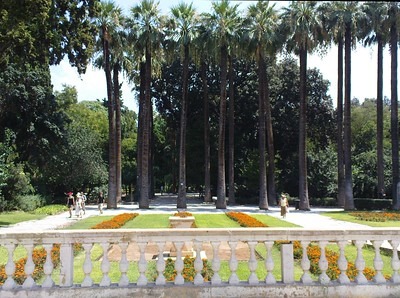
Behind the Greek Parliament in Syntagma Square, the National Garden is a popular destination for tourists and locals looking for some relaxation and fresh air. The garden is punctuated by shaded sidewalks, little ponds, ancient ruins and statues, forming a picturesque landscape — perfect for leisurely walks and picnics. One of the highlights is a small zoo All the animals are well-cared for, and even peacocks pass by along the way, making it an ideal choice for families with children.
Another highlight of visiting the National Garden is its history, with ruins of ancient Athens scattered throughout the park. Among the remaining structures are Roman mosaics, Corinthian columns and the ruins of an old aqueduct. At the edge of the park is a beautiful neoclassical building called the Zappeion Hall, which is used for exhibitions and conferences.
As a summer option, the garden is a nice escape from the heat of the city, in addition to being a pocket of natural and historical beauty. Also, it is a nice place to rest, read a book or drink a coffee in the small but beautiful café of the park. Whether you pop in for some quiet contemplation or spend a few hours wandering around, this leafy park is one of Athens’ unmissable attractions.
Address: Leoforos Amalias, Athens 105 57, Greece
Website: https://www.athens-greece.gr
Plaka District
Plaka is one of the most charming and historic neighborhoods in Athens and is often referred to as the “Neighborhood of the Gods” because of the close proximity to the Acropolis. The narrow cobblestone streets, neoclassical houses, and traditional Greek tavernas here make walking through Plaka feel as if you’re stepping back in time.

This charming neighborhood is one of the oldest continuously inhabited regions in Athens, with origins as far back as antiquity. Once the center of Ottoman-era Athens, traces of that era remain, from Turkish baths to Byzantine churches. Because Plaka offers all kinds of charming shops vending handmade jewelry, ceramics, and souvenirs, it’s an ideal neighborhood for visitors who wish to bring home a little bit of Greek culture.
A popular thing to do in Plaka is to head for the lovely Anafiotika area of the neighborhood, where a small cluster of whitewashed homes were built by islanders from Anafi in the 1800s. The architecture here is very similar to the Cycladic style, & which is a real change from the rest of Athens. Strolling through the quiet alleys of Anafiotika offers the unanticipated oasis feel of an island at the heart of the city.
There are also a few small but excellent museums — the Museum of Greek Folk Art, the Frissiras Museum of contemporary art among them — to see in Plaka. At night the district fills with music, as most restaurants and cafés have live performances of traditional Greek music.
For those looking for an authentic way to experience the streets of Athens, nothing fits the bill quite like Plaka with its rich history, culture and colourful nightlife all wrapped up in one captivating area.
Address: Plaka, Athens 105 58, Greece
Website: https://www.athens.com
The Temple of Hephaestus
One of the best preserved ancient Greek temples, the Temple of Hephaestus, overlooks the Ancient Agora of Athens. Completed in 449–415 BC, the temple was dedicated to Hephaestus, the god of fire, craftsmanship and metallurgy. Its location on a small hill is strategic, as it gives visitors a breathtaking view of the ruins below and the Acropolis beyond.

In the Doric order, the Hephaestus Temple consists of a rectangular building surrounded by 34 columns made of almost perfectly preserved marble. Unlike so many other temples that have gone to ruin, this one still stands mostly intact, its friezes and decorative sculptures visible. The intricate carvings illustrate scenes from Greek myth, including the labors of Hercules and Theseus’s fight with the Centaurs.
The temple has had various roles over the ages. It was reformed into a Christian church, dedicated to Saint George during the Byzantine era which helped preserve its construction for centuries. It later became a burial site for Protestants and Western Europeans in the Ottoman period. The site wasn’t officially recognized as an ancient monument and restored to its historical significance until the 19th century.
Visitors are free to roam through the temple, take a look at its architectural splendor, and see how beautifully time has kept itself away from it. The Temple of Hephaestus is one of the best-preserved ancient structures in Athens, and visiting it is as important part of discovering the city and its past in terms of Greek craftsmanship and piety.
Address: Ancient Agora of Athens, Athens 105 55, Greece
Website: https://www.culture.gr
The Benaki Museum
The Benaki Museum is among Greece’s most notable cultural institutions, housing a vast collection of objects covering Greek history from the prehistoric era to the contemporary era. Established in 1930 by Antonis Benakis, this museum, located in a lovely neoclassical mansion in downtown Athens, is a fascinating overview of Greek civilization.

The museum’s collection is organized into a number of galleries, which cover different historical periods. Includes prehistoric and ancient Greek pottery, jewelry, and sculptures that underscore the artistic accomplishments of early Greek societies. The Byzantine part of the museum features religious icons, manuscripts, and mosaics, that reflect Byzantine religious and artistic traditions.
The museum’s most impressive sections highlights the Greek folk art of traditional costumes, textiles and household goods through time and place. These artifacts offer a glimpse into Greek agrarian life and the country’s abundant cultural heritage. The museum also has exhibitions on the Greek War of Independence (1821), showcasing weapons, paintings and personal belongings of key historical figures.
In addition to its permanent collections, the Benaki Museum runs rotating exhibitions, educational programs, and cultural events year-round. It also features a lovely café on the top floor, with beautiful views of Athens, where you can take a break from the exhibits.
Perfect for those interested in history or art, the Benaki Museum is a deep dive into Greece’s past and present, rendering it an impressive attraction in Athens.
Address: Koumbari 1, Athens 106 74, Greece
Website: https://www.benaki.gr
The Museum of Cycladic Art
One of the most unique and interesting museums in Athens, the Museum of Cycladic Art is dedicated to ancient Aegean civilizations, especially the inhabitants of the Cycladic Islands. Founded in 1986, the museum showcases an exceptional collection of Cycladic marble figurines, pottery and artifacts from the Bronze Age (3200–2000 BC).
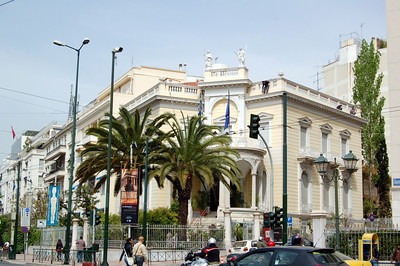
The museum’s centerpiece is its collection of Cycladic figurines — small, minimalist marble statues that are thought to have served religious or funerary purposes. Considered masterpieces of early Aegean art, these elegant sculptures with their simple shapes of human forms have influenced many modern artists, including Pablo Picasso and Henry Moore.
The museum also showcases cultures from ancient Greece and Cyprus in addition to Cycladic art. Visitors can view artifacts from the Archaic, Classical and Hellenistic periods of ancient Greece from beautifully decorated pottery, bronze weapons and intricate gold jewelry. These displays tell a bigger story of how the Cycladic civilization related to the rest of the Greek world.
Its modern layout and interactive displays make it an engaging visit for all ages. Besides, they also organize short-term exhibitions, educational programs, and guided tours. Dubbed one of Athens’ hidden gems, the Museum of Cycladic Art offers a new perspective on artistic and cultural achievements in the Aegean islands.
Address: Neofitou Vamva 4, Athens 106 74, Greece
Website: https://www.cycladic
